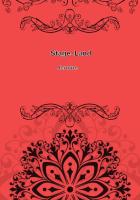The Theodosians represent those who were in theory at one with the preceding category, but who, having less religious fanaticism, considered it necessary to yield to force and make peace with the Government without sacrificing their convictions. In the Pomortsi we see those who preserved only the religious ideas of the schism, and became reconciled with the civil power. Lastly we have the Old Ritualists, who differed from all the other sects in retaining the old ordinances, and who simply rejected the spiritual authority of the dominant Church. Besides these chief sections of the Nonconformists there are a great many minor denominations (tolki), differing from each other on minor points of doctrine. In certain districts, it is said, nearly every village has one or two independent sects. This is especially the case among the Don Cossacks and the Cossacks of the Ural, who are in part descendants of the men who fled from the early persecutions.
Of all the sects the Old Ritualists stand nearest to the official Church. They hold the same dogmas, practise the same rites, and differ only in trifling ceremonial matters, which few people consider essential. In the hope of inducing them to return to the official fold the Government created at the beginning of last century special churches, in which they were allowed to retain their ceremonial peculiarities on condition of accepting regularly consecrated priests and submitting to ecclesiastical jurisdiction.
As yet the design has not met with much success. The great majority of the Old Ritualists regard it as a trap, and assert that the Church in ****** this concession has been guilty of self-
contradiction. "The Ecclesiastical Council of Moscow," they say, "anathematised our forefathers for holding to the old ritual, and declared that the whole course of nature would be changed sooner than the curse be withdrawn. The course of nature has not been changed, but the anathema has been cancelled." This argument ought to have a certain weight with those who believe in the infallibility of Ecclesiastical Councils.
Towards the Priestless People the Government has always acted in a much less conciliatory spirit. Its severity has been sometimes justified on the ground that sectariani** has had a political as well as a religious significance. A State like Russia cannot overlook the existence of sects which preach the duty of systematic resistance to the civil and ecclesiastical authorities and hold doctrines which lead to the grossest immorality. This argument, it must be admitted, is not without a certain force, but it seems to me that the policy adopted tended to increase rather than diminish the evils which it sought to cure. Instead of dispelling the absurd idea that the Tsar was Antichrist by a system of strict and evenhanded justice, punishing merely actual crimes and delinquencies, the Government confirmed the notion in the minds of thousands by persecuting those who had committed no crime and who desired merely to worship God according to their conscience. Above all it erred in opposing and punishing those marriages which, though legally irregular, were the best possible means of diminishing fanaticism, by leading back the fanatics to healthy social life. Fortunately these errors have now been abandoned. A
policy of greater clemency and conciliation has been adopted, and has proved much more efficacious than persecution. The Dissenters have not returned to the official fold, but they have lost much of their old fanaticism and exclusiveness.
In respect of numbers the sectarians compose a very formidable body. Of Old Ritualists and Priestless People there are, it is said, no less than eleven millions; and the Protestant and fantastical sects comprise probably about five millions more. If these numbers be correct, the sectarians constitute about an eighth of the whole population of the Empire. They count in their ranks none of the nobles--none of the so-called enlightened class--but they include in their number a respectable proportion of the peasants, a third of the rich merchant class, the majority of the Don Cossacks, and nearly all the Cossacks of the Ural.
Under these circumstances it is important to know how far the sectarians are politically disaffected. Some people imagine that in the event of an insurrection or a foreign invasion they might rise against the Government, whilst others believe that this supposed danger is purely imaginary. For my own part I agree with the latter opinion, which is strongly supported by the history of many important events, such as the French invasion in 1812, the Crimean War, and the last Polish insurrection. The great majority of the Schismatics and heretics are, I believe, loyal subjects of the Tsar. The more violent sects, which are alone capable of active hostility against the authorities, are weak in numbers, and regard all outsiders with such profound mistrust that they are wholly impervious to inflammatory influences from without. Even if all the sects were capable of active hostility, they would not be nearly so formidable as their numbers seem to indicate, for they are hostile to each other, and are wholly incapable of combining for a common purpose.
Though sectariani** is thus by no means a serious political danger, it has nevertheless a considerable political significance. It proves satisfactorily that the Russian people is by no means so docile and pliable as is commonly supposed, and that it is capable of showing a stubborn, passive resistance to authority when it believes great interests to be at stake. The dogged energy which it has displayed in asserting for centuries its religious liberty may perhaps some day be employed in the arena of secular politics.















